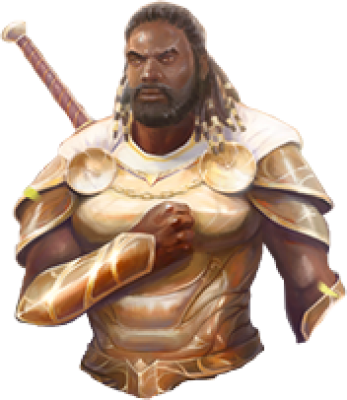Despite the banning of Stubby Hammerers, Fai is still a top contender in the current meta. The explosiveness of the deck from turn one is no longer as explosive without them, but as we will see, Fai can generate a great deal of value from the combination of his weapon plus his ability to fetch Phoenix Flames from his graveyard. Even playing a so-called "straightforward, non-combo" strategy can win games through constant value-generating lines of play, available in most hands.
In previous articles, I've analyzed lines of play seen in Boltyn decks in an effort to understand how to generate the most value over the duration of a game. We will do the same for Fai here, by first looking at the foundation of Fai’s turns, then the amount of damage the deck is able to output by hand size. Once we have a framework for how we expect our typical hands to play out, we will be able to build better decks by assessing how well single cards fit into that strategy.
Forging a Foundation
Before we begin our line by line examples, let’s set up a basic equipment package that we can reference during our assessment. We’ll use Mask of Momentum, Fyendal’s Spring Tunic, Tiger Stripe Shuko, and Snapdragon Scalers. Our weapon of choice is Searing Emberblade.

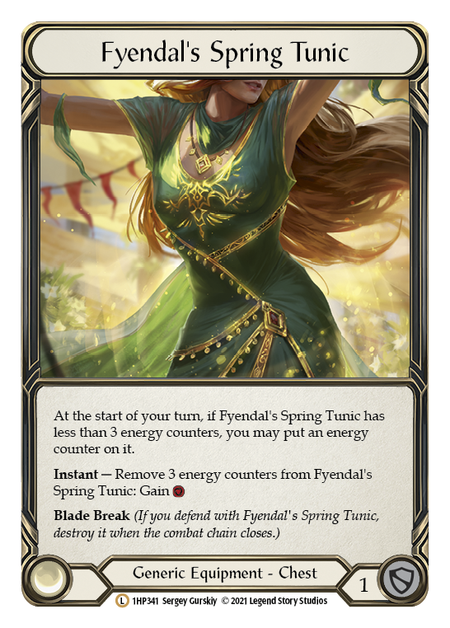

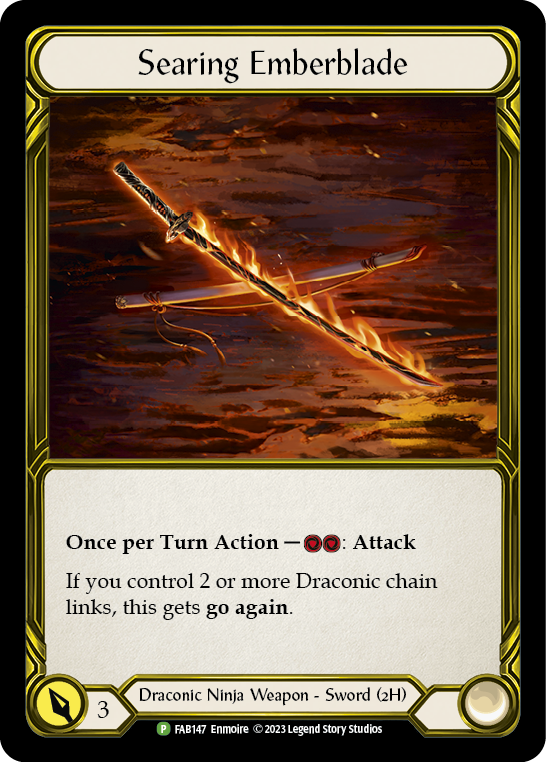
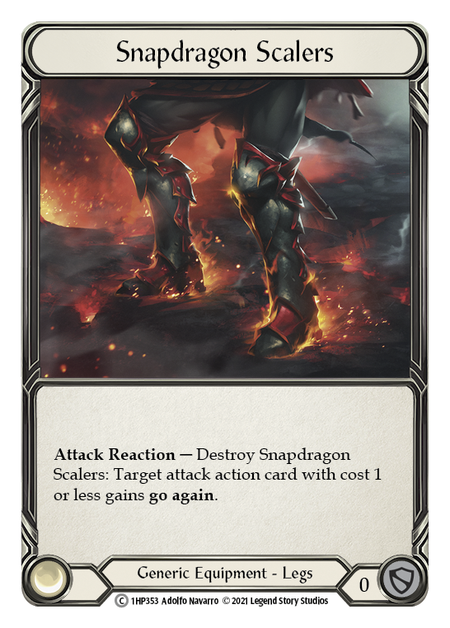
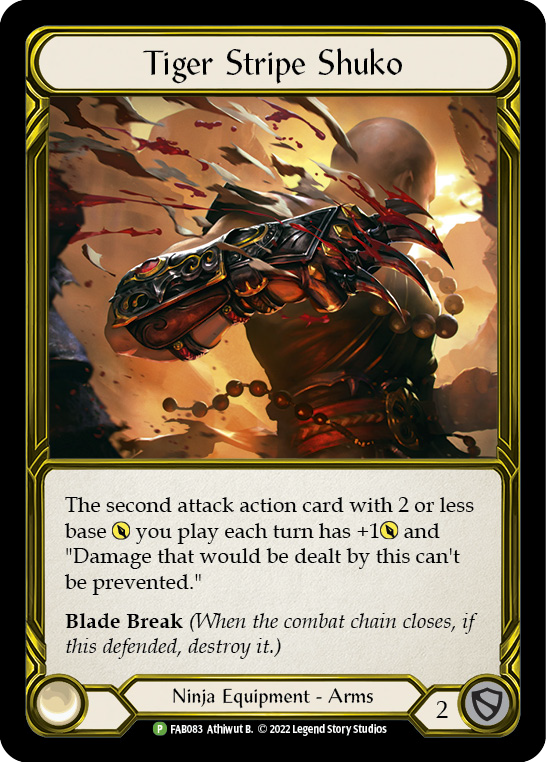
Let’s also quickly run down what Fai wants to do. To maximize his ability, we want to make it as free as possible, meaning we don’t want to have to pay resources to get a Flame out of the graveyard if we don’t have to. We’d also like to swing his weapon, since having three damage available to use on the board lessens the necessity to keep cards in hand, generally. Ideally, we'd like to pay for our sword and our hero power with a single blue pitch- and if we can float a resource, all the better!
In general, a Fai turn will look something like this: play an attack action, swing the weapon, retrieve and play the flame from discard, finish the chain with a valuable attack action. If your first attack action is Draconic, chain two is a decent time to spend your blue pitch on the weapon and Fai's ability.
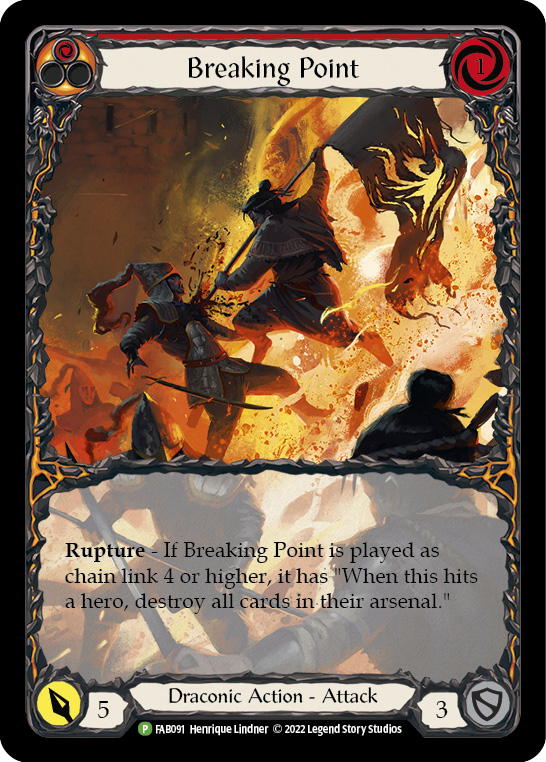
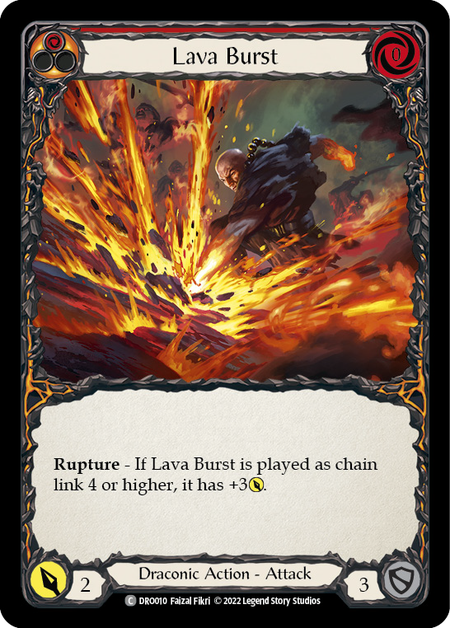
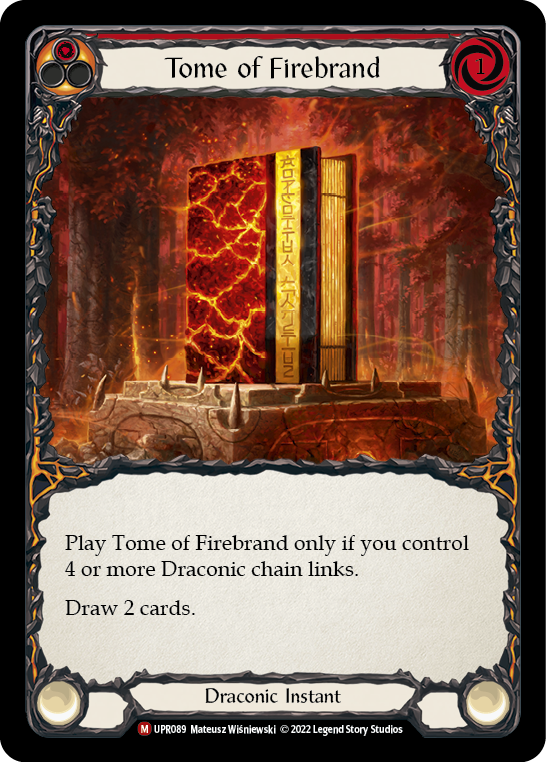
If your hand allows for it, an even better scenario would be to play two Draconic attack actions before swinging the weapon, which would make your Fai ability free. If both attack one and two are 0 cost, you will end up with four chain links and still have one resource available to you to play a 1-cost finisher for 4 or 5 damage- or a Tome of Firebrand to draw two cards and continue the chain. If your Tunic counter is full, you could even end the chain with a 2-cost card like Command and Conquer or Erase Face.
We’re starting to get into deeper water with the lines, so let’s break it down by hand size.
Draconic Math
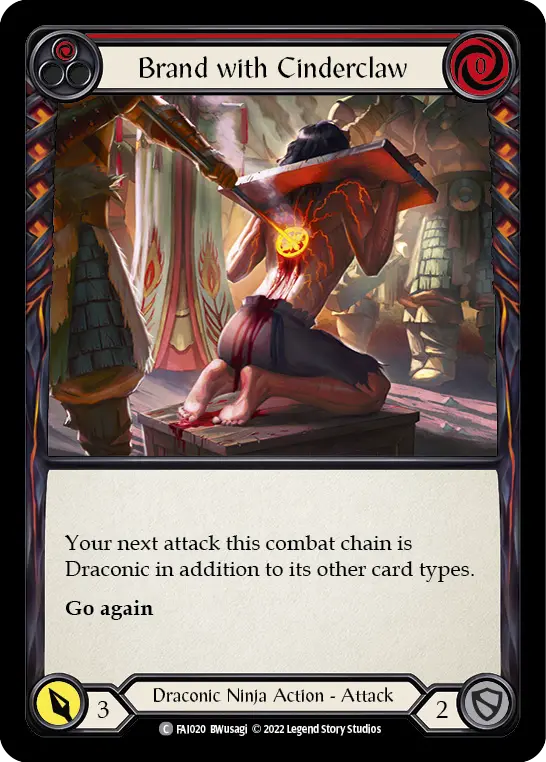


One-card options:
- 0 for 3 damage attack.
- 0 for 4 damage attack (Snatch, Scar for a Scar, etc).
- Pitch to swing Emberblade for 3.
Fai’s 1-card hands deal 3 or 4 damage. If Tunic is up, you might get away with a 1-for-5 attack, but I think there are better uses for Tunic, as we’ll discuss later. We’ll say Fai’s one card hand equals between 3 and 4 damage.
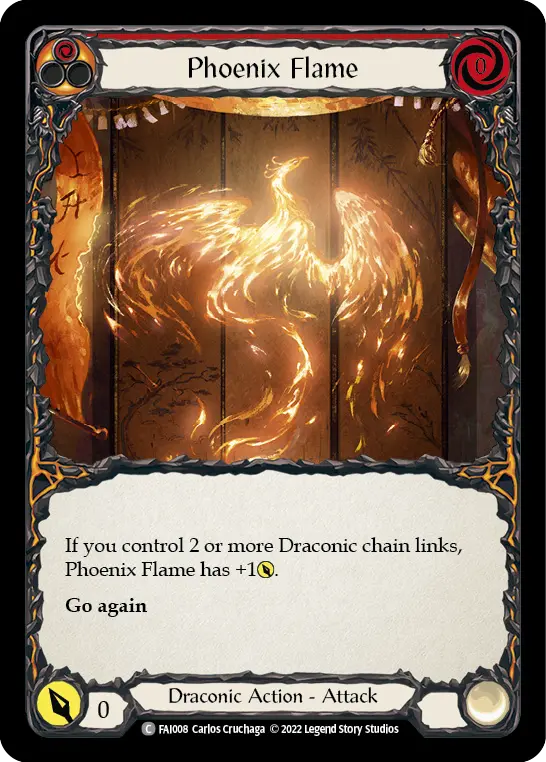
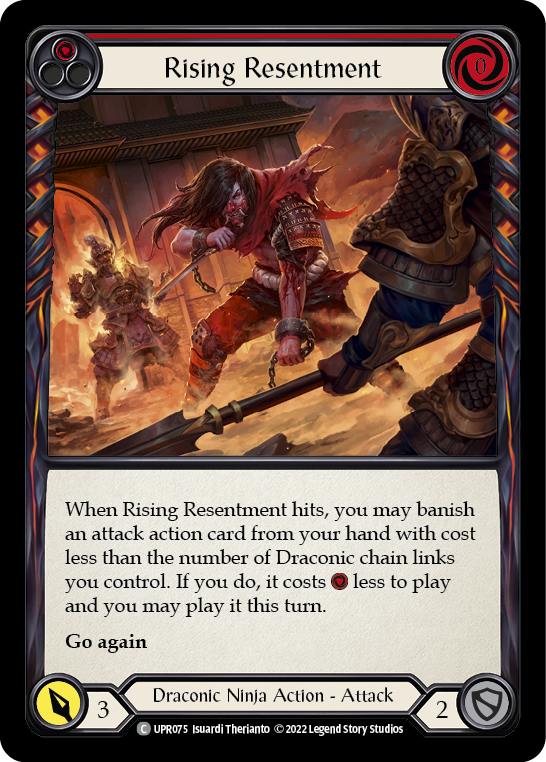

Two-card options:
- 0 for 3 > weapon > Phoenix Flame
- 1 for 4 > weapon
- 0 for 3 > 0 for 4
- 0 for 3 > 0 for 3
If you keep two cards in hand, one of them being blue pitch, you can begin to see the value of Emberblade plus Flame. Getting to three chain links means you can threaten the Mask of Momentum on-hit from just two cards. Each of these options present between 6 and 7 damage.


Three cards:
- 0 for 3 > weapon > Phoenix Flame > Lava Burst
Three card hands land you solidly in Mask-threatening territory, and also set us up for Rupture (our chain finisher of choice is Lava Burst). If Tunic is up, you could even begin the chain with a 1-for-4 to present more damage. For now, let’s call this one 13 damage, since our Lava Burst is presenting 6 damage total, with the help of Tiger Stripe Shuko.
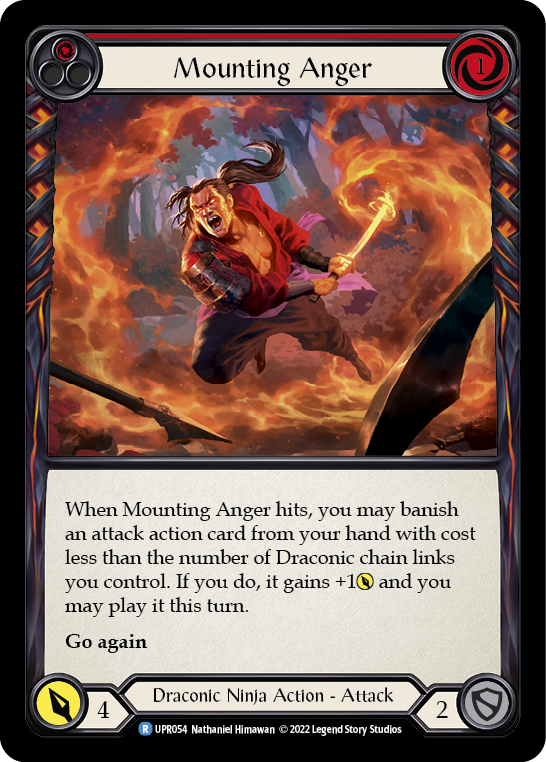
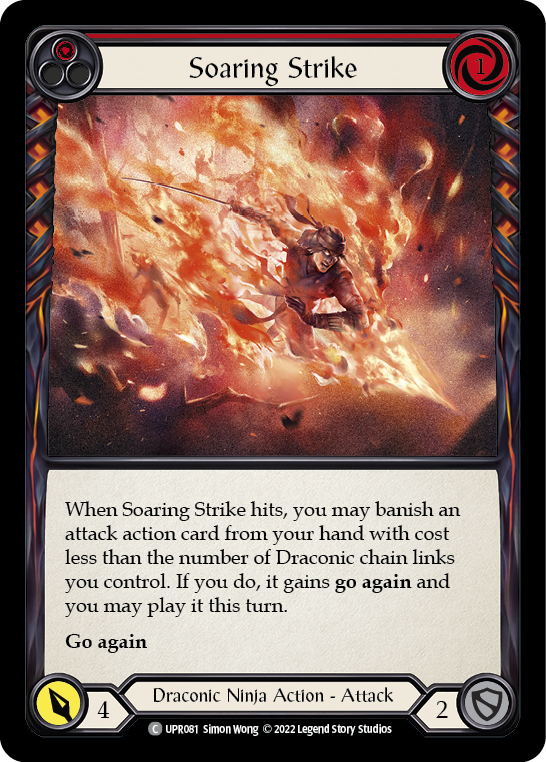
Four cards:
- 0 for 3 > weapon > 1 for 4 > Flame > Lava Burst
- 0 for 3 > weapon > 0 for 3 > Flame > Lava Burst
With four cards you are now threatening 16 or 17 damage, and can even threaten a second Mask hit (6th chain link) if your first Mask drew you an attack with go again. Fai’s ability is now free, as well. 16 damage for four cards is pretty exceptional for an aggro deck. In this line, each of your cards is worth 4 damage on average.
Stats Impact Strategy
The fact that damage-per-card scales in this way is a big reason why Fai decks are not interested in blocking, and actually lose value by blocking. A majority of cards in Fai block for 2, but even the cards that block for 3 lose a point of value by blocking, since the opportunity cost of doing so means they can never be played in a line where they could be valued at the 4 average. For example, if you block with two cards and play two cards, your hand potential has gone from 16 damage to 6 or 7 damage, based on the hands we outlined above. That’s a 9-10 damage difference! When you blocked with two cards, did you prevent 9-10 damage? Probably not.
If you block with two cards and play two cards, your hand potential has gone from 16 damage to 6 or 7 damage.
Five card hands get into the 20+ damage territory, with the ability to threaten two Mask triggers, plus even more card draw if you Snatch + Snapdragons to keep going. The possibilities with five cards also compound in value with interactions like Tunic + Spreading Flames or Art of War from arsenal, that make it harder for your opponent to block Mask triggers.
(This is the strategy I prefer when using Tunic counters, by the way; still, Tunic for 4-5 damage can be correct in the right game state.)
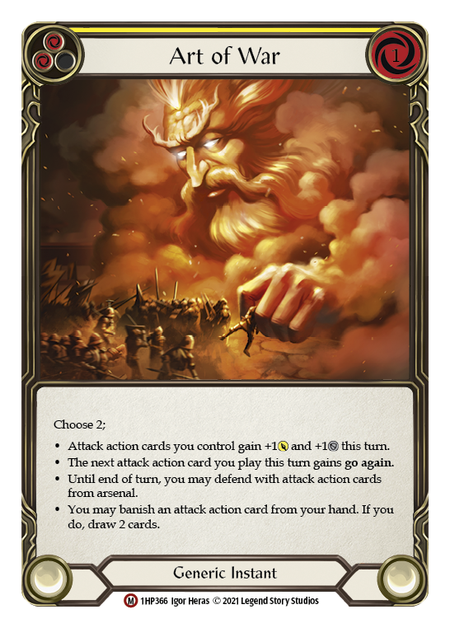
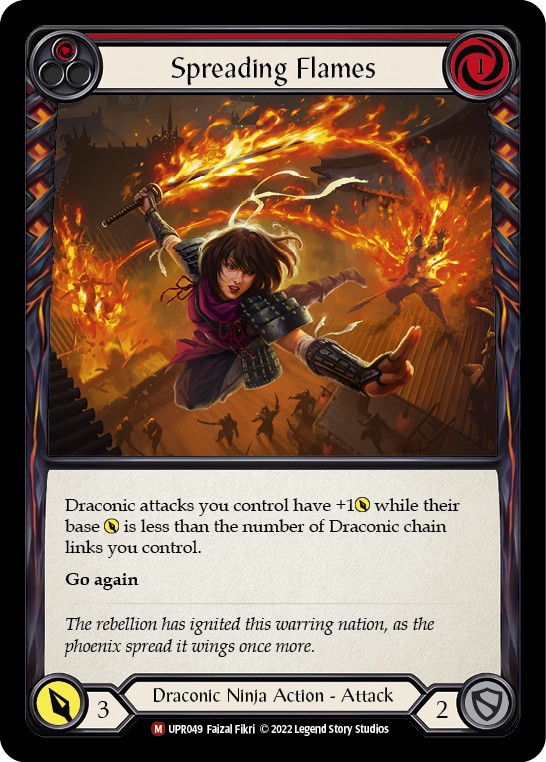
Testing the Theory
Now that we have a solid understanding of the type of value we want to be generating and how the hands will play out, let’s do a deckbuilding exercise. Let’s consider running red Engulfing Flamewave in our deck.
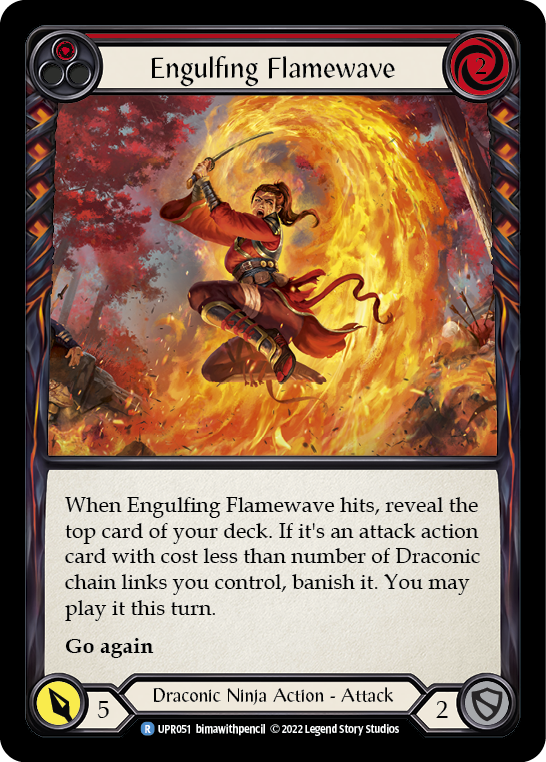
Engulfing Flamewave costs the same as our weapon, but it attacks for 5 and has an enticing on-hit effect of allowing you to play additional cards from your deck via the banish zone. Let’s consider Flamewave using our hand-by-hand method, replacing Emberblade with it, and starting with the two-card hand line since you can’t play it without pitching for its cost.
Two-card options:
- Flamewave [does not hit] = 5 damage
- Flamewave [hits and banishes 0 for 3] > 0 for 3 > Flame from graveyard = 9 dmg
- Flamewave [hits and banishes 0 for 3] > 0 for 3 > Flame [Mask trigger draws 0 for 3] > 0 for 3 = 12 dmg
- Flamewave [hits, but can’t banish] = 5 dmg
If Mask doesn’t trigger, we’re doing 9 damage, which is pretty great if you manage to hit and draw the 0-cost attack. You could also draw a weaker blue attack, or something that costs more, which sounds much worse to me than the 6-7 damage two-card with Emberblade. If Mask does trigger, it could add 3-5 damage depending on what you draw, which is still only 12-14 total. A Mask trigger during the Emberblade hand could add the same 3-5 damage, bringing that hand up to 10 or 12. So on average, the two-card line using Flamewave is potentially 2 dmg greater than the two-card hand with Emberblade, which is- conveniently- just the amount of damage it is greater than Emberblade: 5 vs 3.
Eh, ok, sure. Let’s keep going.
Three cards:
- 0 for 3 > Flamewave [does not hit] > Flame = 9 dmg
- 0 for 3 > Flamewave [hits and banishes 0 for 3] > Flame > 0 for 3 = 12 dmg
- 0 for 3 > Flamewave [hits and banishes 1 for 4] > Flame > 1 for 4 = 13 dmg - but requires Tunic
- 0 for 3 > Flamewave [hits and banishes 0 for 3] > Flame [Mask trigger draws 0 for 3] > 0 for 3 > 0 for 3 = 15 dmg
- 0 for 3 > Flamewave [hits and banishes 1 for 4] > Flame [Mask trigger draws 0 for 3] > 1 for 4 > 0 for 3 = 16 dmg - but requires Tunic
Compared to Emberblade’s three-card hand:
- 0 for 3 > weapon > Flame > Lava Burst = 13 dmg
- 0 for 3 > weapon > Flame [Mask trigger draws 0 for 3] > 0 for 3 > Lava Burst = 16 dmg
Looks like three-card hands are better with the weapon. With Emberblade, we can attain the same damage output we would need our Tunic resource to achieve with Flamewave.
Four cards:
- 0 for 3 > Flamewave [does not hit] > Flame > Lava Burst = 15 dmg
- 0 for 3 > Flamewave [hits and banishes 0 for 3] > Flame > 0 for 3 > Lava Burst = 18 dmg
- 0 for 3 > Flamewave [hits and banishes 1 for 4] > Flame > 1 for 4 > Lava Burst = 19 dmg - but requires Tunic
- 0 for 3 > Flamewave [hits and banishes 0 for 3] > Flame [Mask trigger draws 0 for 3] > 0 for 3 > 0 for 3 > Lava Burst [second Mask trigger draws 0 for 3] > 0 for 3 = 24 dmg
- 0 for 3 > Flamewave [hits and banishes 1 for 4] > Flame [Mask trigger draws 0 for 3] > 1 for 4 > 0 for 3 > Lava Burst [second Mask trigger draws 0 for 3] > 0 for 3 = 25 dmg - but requires Tunic
Compared to Emberblade’s four-card hand:
- 0 for 3 > weapon > 0 for 3 > Flame > Lava Burst = 16 dmg
- 0 for 3 > weapon > 1 for 4 > Flame > Lava Burst = 17 dmg
- 0 for 3 > weapon > 0 for 3 > Flame [Mask trigger draws 0 for 3] > 0 for 3 > Lava Burst = 19 dmg
- 0 for 3 > weapon > 1 for 4 > Flame [Mask trigger draws 0 for 3] > 0 for 3 > Lava Burst = 20 dmg
- 0 for 3 > weapon > 0 for 3 > Flame [Mask trigger draws 0 for 3] > 0 for 3 > Lava Burst [second Mask trigger draws 0 for 3] > 0 for 3 = 22 dmg
- 0 for 3 > weapon > 1 for 4 > Flame [Mask trigger draws 0 for 3] > 0 for 3 > Lava Burst [second Mask trigger draws 0 for 3] > 0 for 3 = 23 dmg
Again, the total difference in damage output is ~2. These examples make it clear that running Mask of Momentum with the Emberblade + Phoenix Flame presents similar value, if not more so, than running Flamewave, especially when considering the variance Flamewave is attempting to value as a relevant on-hit ability. We did see that you get the additional damage output from Flamewave in two-card hands, but your draws have to land just right. Same in the four-card hands. What happens if you hit another Flamewave with your Flamewave? If you’re able to banish it, can you pay for it? Will you be happy to draw it off a Mask trigger?
Trial By Fire
I hope this helps illustrate Fai’s scaling value, and provides a way in which you can assess individual cards in relation to what your deck is trying to accomplish. Personally, I plan to skip Engulfing Flamewave. The 2-cost is too expensive for 5 damage with an on-hit the deck is already able to leverage from its equipment. I’d be more enticed to run Take the Tempo as a solid finisher you can pay for off Tunic. Maybe we can evaluate that one in the next article! Thanks for reading!
Background music is Relaxing Chill Music | ARNOR by Alex-Productions | Music promoted by Chosic | Creative Commons CC BY 3.0



